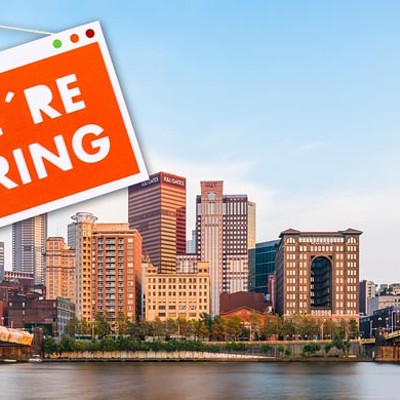It's a telling irony that even when doing something charitable, Andrew Carnegie found a way to put someone else out of business. A few years back, I read an essay by local mystery writer K.C. Constantine, who railed against Carnegie for building his library on the backs of yet another class of worker -- the writer. Giving people free access to books, Constantine pointed out, meant lower book sales for the people whose work lined its shelves. Carnegie's library system wasn't just a gift he paid for; it was one that cost writers, too.
Perhaps that seems strange. (Though really, is it any different from bands objecting to pirated music downloads on the Internet?) But the truth is that in the early days, libraries were businesses, too. A century or two ago, that sweet-natured librarian would have been a sharp-eyed capitalist.
Pittsburgh might seem an unlikely place for such businesses to flourish. As Zadok Cramer, one of the earliest people to write about the city, noted in 1817, "Life in Pittsburgh is drab" and focused on business, with "little time devoted to amusements or to the cultivation of refined social pleasures."
Even so, in Pittsburgh "[p]rivate libraries were early available, and a bookstore and a circulating library was established near [1800]," write Solon and Elizabeth Buck in their book, The Planting of Civilization in Western Pennsylvania.
Most of these early libraries were not "free to the people," as the Carnegie Library's graven boast puts it. They were more like bookstores, where you didn't borrow books so much as rent them ... or rather pay for a time-share in them.
Customers would pay a subscription fee, which gave them access to the library's shelves for a period of time. In 1788, for example, John Boyd placed an ad in the Pittsburgh Gazette seeking 100 subscribers to a library he planned to create. Each subscriber would pay 20 shillings a year to gain access to at least 500 books. Subscribers could keep the book for 15 days (longer if they lived far from town), though if "a book is returned abused, the person returning it [must] pay for whatever damage it may have sustained."
What books could be found in these early libraries? The Bucks compiled a frontier reading list from sales notices and advertisements in early newspapers. Law and classics were popular, as were poems by Alexander Pope, treatises by David Hume and John Locke, and books like Tristram Shandy.
But "The bookstore and library business was precarious," the Bucks write. About two weeks after placing his Gazette ad, they note, "Boyd committed suicide; whether or not because of the failure of his plans for a library is unknown."
A later library owner, William Thompson, confessed his own difficulties in an 1813 advertisement. Noting that while he was "grateful for the encouragement he has already met with (though God knows it is very little)," Thompson pleaded with "the opulent" to provide him with cash, since "there are still many books wanted to satisfy the diversity of taste," and Thompson himself was "poor as a first-rate genius."
Still, libraries did survive, especially within the city itself. One of the earlier, and more successful librarians was Zadok Cramer himself, who ran the Pittsburgh Library Company. Later this was merged with the Pittsburgh Permanent Library, which boasted of having roughly 2,000 books on its shelves in 1815 (though the Bucks note that one visiting patron estimated the collection at a mere 500).
Other libraries came and went, but perhaps the most important was that of Col. James Anderson. Built on the North Side -- then known as Allegheny City -- Anderson's library was merely his private collection, offered free to the public from the second floor of a building along Federal Street. Established in 1850, it "was popular with boys, and was particularly attractive to a special boy," writes Sarah Killikelly in The Story of Pittsburgh. "Here he came in his few leisure hours and read and read." And when that boy, a recent arrival from Scotland named Andrew Carnegie, grew up, he built a library system of its own. And he had a bust made of Col. Anderson by the library he built just a few blocks from the one he used as a kid.
Which makes you a bit more sympathetic to the old capitalist after all.










